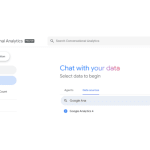
Webhooks and extract, transform, and load (ETL) applications are both used to send data from one place to another, so they’re useful in creating databases and reports. However, they serve different purposes and are not necessarily direct replacements for each other. Let's explore the roles of webhooks and ETLs and learn how they can complement each other:
What Are Webhooks?
Webhooks are user-defined HTTP callbacks that can be used to connect two applications. They are triggered when specific events occur on an external website or service.
Real-Time Communication: Webhooks are used for real-time communication between systems. They allow one system to notify another system about specific events as they happen.
Event-Driven: Webhooks are event-driven, meaning they are triggered by specific events or updates in a system.
Efficiency: Webhooks are efficient for scenarios where you need immediate or near-real-time updates. With webhooks, the data is pushed to the receiving system the moment an event occurs.
What Is an ETL?
ETL stands for extract, transform, and load. With an ETL application, data is extracted from source systems, transformed into the desired format, and loaded into a data warehouse.
Batch Processing: ETL processes typically operate in batches, extracting sets of data from source systems, transforming them according to specific business rules, and then loading them into a target system or data warehouse.
Data Integration: ETL processes are commonly used for data integration, data migration, and business intelligence purposes.
Scheduled Jobs: ETL processes are often scheduled to run at specific intervals, such as nightly or hourly, depending on the business requirements.
Data Transformation: ETL processes include data transformation steps, where data is cleansed, standardized, and converted into an analysis-ready format.
Complementary Use Cases
Webhooks and ETL applications can complement each other in a data integration strategy:
Real-Time Data Ingestion: Use webhooks for immediate updates when real-time data is crucial. For example, if you need to know about new customer sign-ups instantly, webhooks can provide that information.
Batch Processing for Analysis: Use an ETL for aggregating and transforming large volumes of data for analysis. ETL is well-suited for scenarios where data consistency and completeness are more critical than real-time updates.
Hybrid Approaches: In some cases, a hybrid approach is employed. Webhooks may be used for critical, time-sensitive updates, while ETL processes handle less time-sensitive, bulk data movements and transformations.
Data Warehousing: ETLs are often used to populate data warehouses where historical and aggregated data is stored for business intelligence purposes. Webhooks may not be the best choice for populating a data warehouse due to the volume and nature of the data.
In summary, webhooks and ETLs can coexist in a data integration strategy. Each serve a unique purpose based on specific use case requirements. Webhooks are excellent for real-time communication while ETL processes are suitable for larger-scale data integration and transformation tasks.
Launchpad and Webhooks
Launchpad uses webhooks for streaming sources. Streaming sources are source integrations that allow for real-time ingestion of data to a destination of your choice. This is in addition to the more standard method of scheduled, batched data retrieval mentioned above. ETL transformation logic and business rules can be applied which provides the ability to transform data as it is ingested.
Launchpad's streaming features also work with sources configured using GET and POST requests. GET requests are intended to retrieve data from a server and do not modify the server's state. On the other hand, POST requests are used to send data to the server for processing and may modify the server's state.
See more about the benefits of Streaming ETL
Conclusion
At Calibrate Analytics, we've worked hard to introduce streaming features into Launchpad. Contact us today to find out how we can help you integrate this realtime, game-changing architecture as part of your data solution.

Launchpad is our powerful and easy-to-use one-stop shop to transfer data from an array of domains to destinations of your choice. It helps you easily access your data and transfer it to your preferred data warehouse where it can then be transformed, analyzed and visualized.






